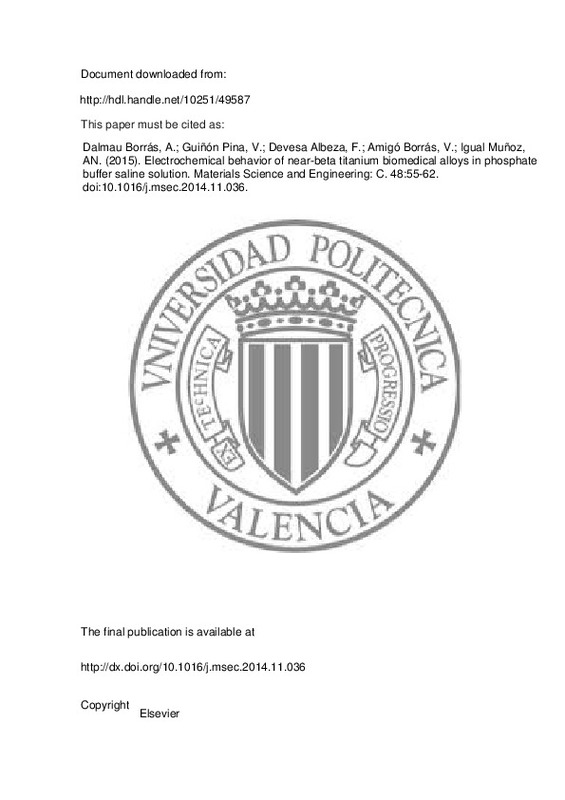JavaScript is disabled for your browser. Some features of this site may not work without it.
Buscar en RiuNet
Listar
Mi cuenta
Estadísticas
Ayuda RiuNet
Admin. UPV
Electrochemical behavior of near-beta titanium biomedical alloys in phosphate buffer saline solution
Mostrar el registro completo del ítem
Dalmau Borrás, A.; Guiñón Pina, V.; Devesa Albeza, F.; Amigó Borrás, V.; Igual Muñoz, AN. (2015). Electrochemical behavior of near-beta titanium biomedical alloys in phosphate buffer saline solution. Materials Science and Engineering: C. 48:55-62. https://doi.org/10.1016/j.msec.2014.11.036
Por favor, use este identificador para citar o enlazar este ítem: http://hdl.handle.net/10251/49587
Ficheros en el ítem
Metadatos del ítem
| Título: | Electrochemical behavior of near-beta titanium biomedical alloys in phosphate buffer saline solution | |
| Autor: | Devesa Albeza, Francisco Igual Muñoz, Anna Neus | |
| Entidad UPV: |
|
|
| Fecha difusión: |
|
|
| Resumen: |
The electrochemical behavior of three different near-β titanium alloys (composed by Ti, Nb and Sn) obtained by powder metallurgy for biomedical applications has been investigated. Different electrochemical and microscopy ...[+]
|
|
| Palabras clave: |
|
|
| Derechos de uso: | Reserva de todos los derechos | |
| Fuente: |
|
|
| DOI: |
|
|
| Editorial: |
|
|
| Versión del editor: | http://dx.doi.org/10.1016/j.msec.2014.11.036 | |
| Código del Proyecto: |
|
|
| Agradecimientos: |
|
|
| Tipo: |
|







![[Cerrado]](/themes/UPV/images/candado.png)


